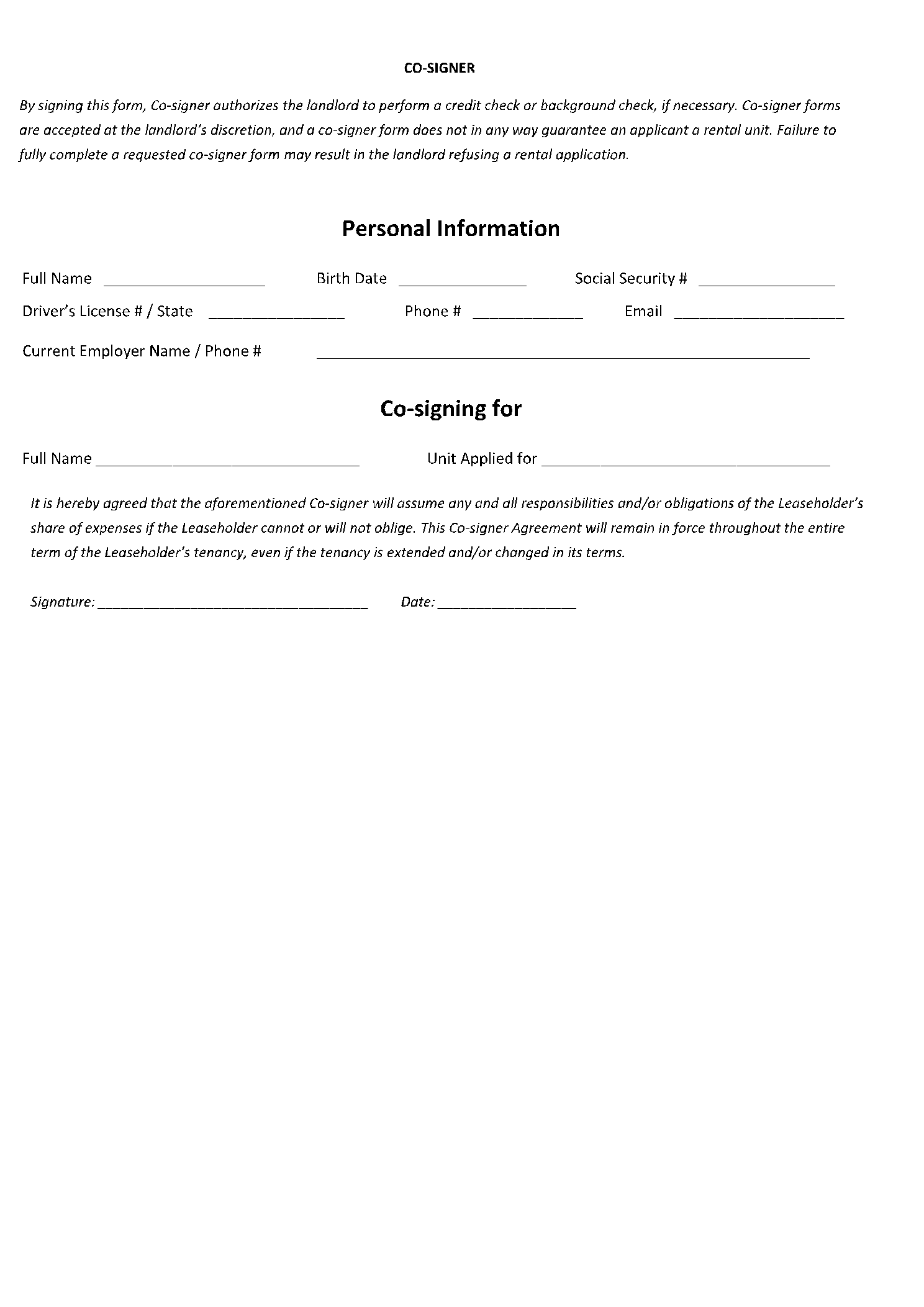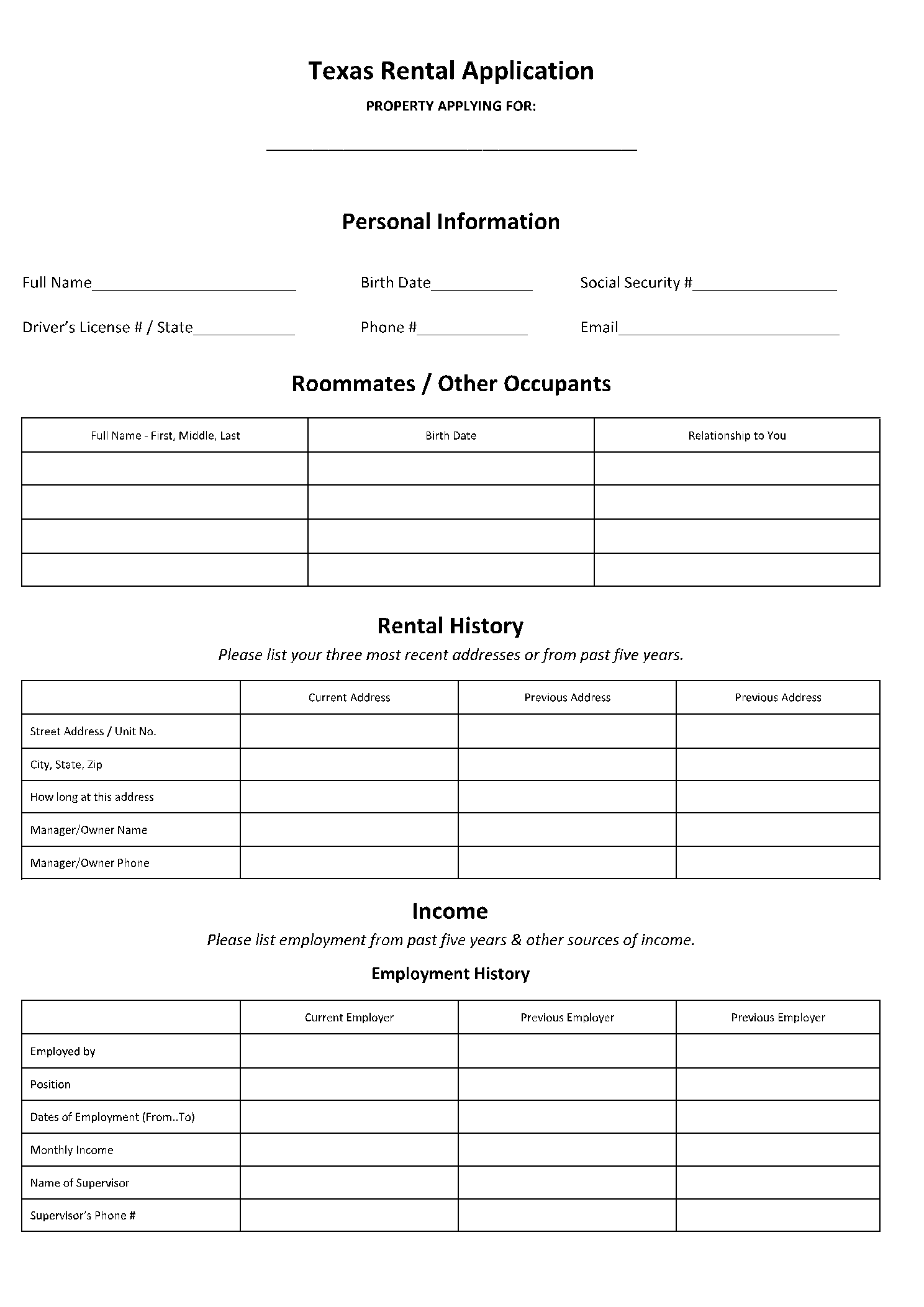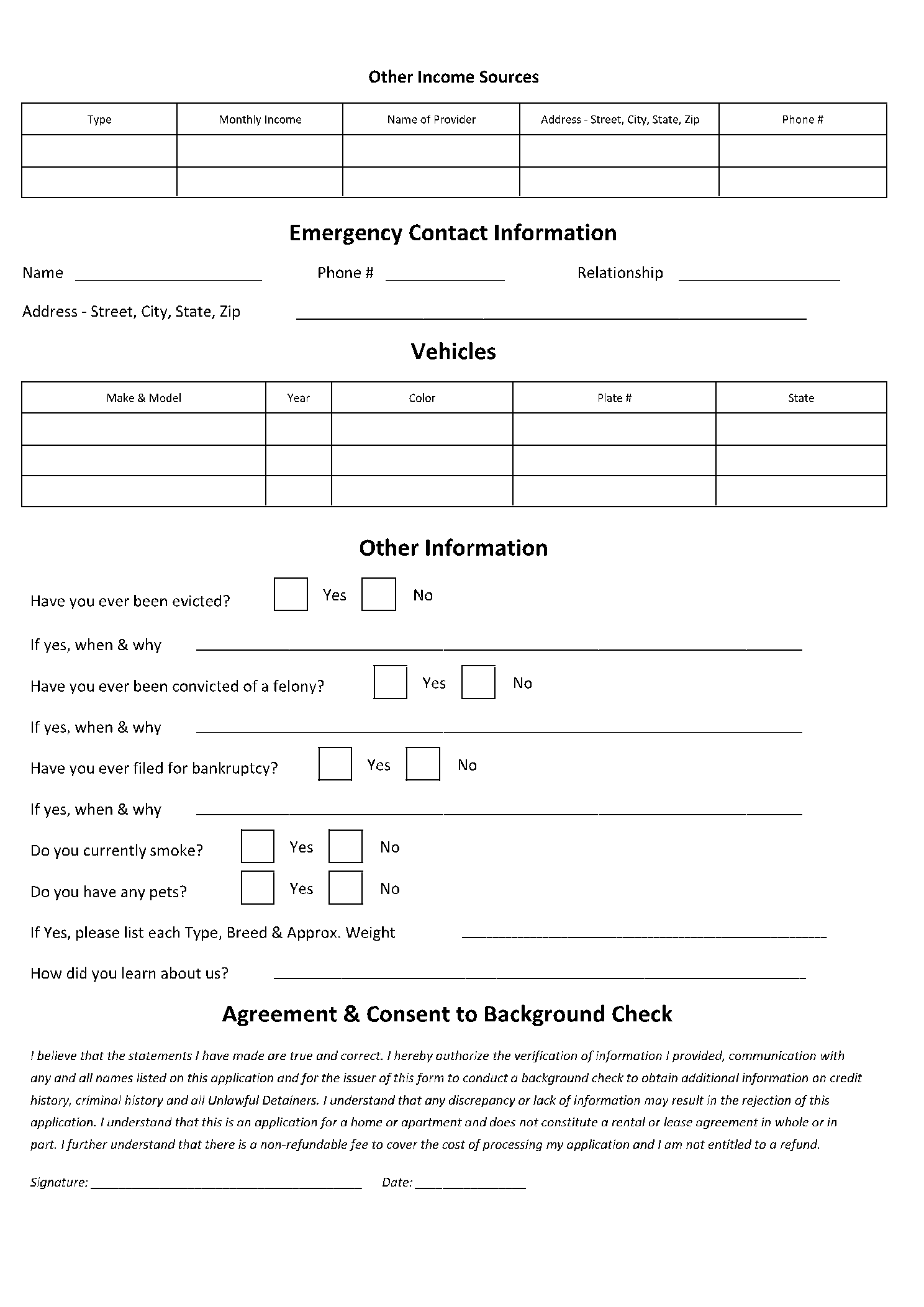The Texas rental application is an important part of the property-renting procedure. The application holds importance in regard to security purposes. However, it has some regulations that the state law of Texas imposes. Do you want to know more details about the Texas rental application? Keep reading.
What Is a Texas Rental Application?
A Texas rental application is basically an application form that the landlords use for renting a property. Whereby this document helps to screen information about the people who apply for renting a property.
The landlord can access background information of the applicants, helping them choose the probable tenant. Moreover, they can check the tenant’s employment details including their income, as well as the tenant’s history regarding rent-living.
A landlord can also acquire information about the credit report of the tenant through the Texas rental application. Although obtaining this information is legal for a landlord, it does carry some regulations from the state.
Furthermore, the landlords have to strictly follow the rules and regulations of the Texas law when forming a Texas rental application form. The extent to which a landlord requires information depends on the landlord themselves.
Some of the landlords only check the credit report of the tenant, making it short to an approximate of 15 minutes. While on the other hand, some landlords take a thorough verification route where it takes them days to verify the information provided by the applicant.
This form’s purpose is to ensure that the tenant the landlord hires will be able to pay the rent. This helps in eradicating any future conflict between the landlord and the tenant. Upon approval of an applicant, the landlord issues the lease agreement.
Why Is It Important to Have a Texas Rental Application?
With the renting of property, there comes a great risk regarding the tenants and their conduct. The tenant may not pay rent responsibly and on time. Moreover, a tenant can also damage the premises rented in addition to not taking care of the property.
In circumstances like these, it is always a good idea to know a person better before letting them into your property. The landlords can do so through carefully drafted rental application forms. Besides, the Texas rental application forms help a landlord to protect the investment they have put in the property.
What Are Included in a Texas Rental Application?
A Texas rental application consists of all the necessary information about the applicants that reflects their ability to pay rent. These include:
Introduction:
The introduction part of the Texas rental application consists of the selection criteria that the landlord sets. It is important that the landlord asks the applicants to sign this section to ensure they understand the criteria.
No Guarantee of Housing:
The rental applications do not mean that the applicant gets the property on rent. Although applicants understand it, it is important for the landlords to declare this in the application form.
Application Fee:
Under the state law of Texas, a landlord can charge an application fee for the probable tenants to pay. The landlord decides the amount of the application fee since the state doesn’t fix any limit on the amount.
Moreover, it is legal for the landlord to not provide a refund to the applicants who do not get the rent approval. However, the terms related to the application fee must clearly appear on the application form.
This helps the applicants decide whether they want to apply for certain property or not. As well as, it removes any misunderstanding that the applicant may have regarding the amount refund.
Description of a Rental Unit:
The landlord must provide complete and correct information about the rental unit on the application form. This clears the expectations of the applicants. Some of the information to include regarding the unit are:
- Proper address of the unit/property to rent.
- State whether it is a home, single-family, duplex, mobile home, or an apartment.
- Include the unit number.
- State the number of bedrooms and bathrooms.
- Identify any common area that other tenants or residents may also use.
- State the monthly rent, also include the date on which rent is due along with the method of payment.
Personal and Contact Information:
The landlord can ask for the personal information of the tenant and their spouse. This includes their full name, current living address, and any previous names they held. However, the landlord cannot ask for age, ethnicity, or marital status to avoid discrimination.
The landlord can verify this information through government ID, driving license, and compare it with the information provided. The documents that the landlord can demand as part of the application include:
- Birth certificate
- Citizenship certificate
- Alien registration card
- Employment authorization documentation from USCIS
Rental History:
It is legal for the landlord to collect the rental history of the applicant based on the past 3 to 5 years. This includes their addresses of residences along with the starting and ending date of the residence term.
Additionally, the rental history section addresses the previous residences that the applicant personally rented or shared with others. This section also has space for the applicant to state the reason for leaving the previous residence.
Some other questions that the landlord may include in this section are:
- Have you ever terminated a lease before its due period? State the reason, if so.
- Has a landlord ever refused a lease renewal? If so, give details.
- Has a landlord ever sued you for property damage or back rent?
Roommate and Children Details:
This section includes information about roommates. Just like the primary applicant, the landlord must ask the roommates similar questions. In the case of children, include information like names and ages of the children that will live in the property.
Personal and Landlord References:
The landlord can ask the applicants to attach 3 personal references and 3 landlord references with the application form. The personal references are those that the applicant knows personally, except for their immediate family. While landlord references, as the name suggests, are the previous landlords.
Personal Employment History:
This section enables the landlord to know the applicants better by knowing their employment history. Therefore, the applicants must include their job history for the past 5 years.
Other Forms of Income:
The applicants must state if they have any other source of income besides one job. This helps the landlord in ensuring that the applicant can bear the expenses of living in their property.
Criminal History:
It is very important to check the criminal history of the applicant. The state law of Texas allows the landlord to run a background check upon approval of the applicant.
Financial and Credit History:
A landlord can demand the credit history of the applicant to see their financial stability. However, the credit check requires a social security number which some applicants may not have.
Regulations in Texas Governing Rental Applications
The state law of Texas imposes certain regulations on the Texas rental applications. Some of these include:
- It is mandatory for the landlord to explain the criteria for selection properly.
- The landlord must provide a reason for declining an application.
- If the landlord doesn’t provide the selection criteria, he must refund the fee.
- If the landlord doesn’t accept the offer within 7 days, the application gets rejected.
- Fair Housing Laws prohibit any sort of discrimination between the applicants.
- The landlord must accept or reject the co-applicants together.
Conclusion
A Texas rental form is a useful document to scrutinize the applicants for a property to rent. However, the state law has some regulations regarding this document which the landlord must follow.
Therefore, a landlord crafts the Texas rental application form carefully by including all the important terms. Such an application form is available at the website of CocoSign where there are many other templates present too.



